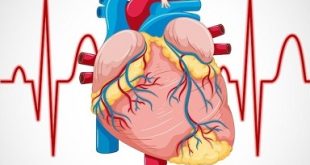What is Wilms Tumor?
Wilms tumor is a rare kidney cancer that is highly treatable. Most kids with Wilms tumor survive and go on to live normal, healthy lives. Also known as nephroblastoma, Wilms tumor can affect both kidneys, but usually develops in just one. Doctors believe that the tumor begins to grow as a fetus develops in the womb, with some cells that should form into the kidneys instead forming a tumor.
Types of Wilms Tumors
There are two kinds of Wilms tumors, divided by how the cells look under a microscope.
- Favorable histology. More than 9 out of 10 Wilms tumors fall into this group. It means there isn’t a lot of difference among the cancer cells. Children with this type have a good chance of being cured.
- Unfavorable or anaplastic histology. This type has a variety of deformed cancer cells. It can be much harder to cure.
Causes and risk factors for Wilms’ tumor
It’s not clear what exactly causes Wilms’ tumors. So far, researchers haven’t found any clear links between Wilms’ tumor and environmental factors. These factors include drugs, chemicals, or infectious agents, either during a mother’s pregnancy or after birth.
Genetic factors
Researchers don’t think children directly inherit the condition from their parents. Only one to two percent of children with Wilms’ tumors have a relative who has had the same condition. That relative typically isn’t a parent.
However, researchers believe certain genetic factors might increase a child’s risk, or predispose children to developing Wilms’ tumor.
The following genetic syndromes may increase a child’s risk for Wilms’ tumor:
- Beckwith-Wiedemann syndrome
- WAGR syndrome
- Denys-Drash syndrome
- Frasier syndrome
- Perlman syndrome
- Sotos syndrome
- Simpson-Golabi-Behmel syndrome
- Bloom syndrome
- Li-Fraumeni syndrome
- Trisomy 18, also called Edward’s Syndrome
Frasier syndrome, WAGR syndrome, and Denys-Drash syndrome are linked to changes or mutations in the WT1 gene. Beckwith-Wiedemann syndrome, a growth disorder that causes body and organ enlargement, is linked to a mutation in the WT2 gene.
These are both genes that suppress tumors and are found on chromosome 11. However, changes in these genes only account for a small percentage of Wilms’ tumors. There are likely other gene mutations that haven’t yet been discovered.
Children with certain birth defects may be more likely to have Wilms’ tumor. The following birth defects are associated with the condition:
- Aniridia: a missing or partially missing iris
- Hemihypertrophy: when one side of the body is larger than the other
- Cryptorchidism: undescended testicles in boys
- Hypospadias: when the urinary opening is on the underside of the penis
Race
Wilms’ tumor occurs slightly more often in African-American children than in white children. It’s least common in Asian-American children.
Gender
The risk for development of Wilms’ tumor may be higher in females.
Wilms Tumor Symptoms
Some children who have a Wilms tumor won’t notice symptoms. Others may have:
- Belly pain
- Swelling in their belly
- A growth that you can see or feel in their belly
- Fever
- Nausea
- Lack of appetite
- High blood pressure
- Blood in their pee
- Constipation
- Shortness of breath
Many Wilms tumors get very big before anyone notices them. They’re sometimes the only sign of the disease. The average size is 1 pound.
How Is Wilms Tumor Diagnosed?
Several tests are used to confirm a Wilms tumor diagnosis and determine the stage of the disease. These tests can include:
- Ultrasound: usually the first test done, it uses sound waves instead of X-rays to make an image of the area.
- CT/CAT scan: makes a detailed cross-sectional view of an organ through X-rays. It is extremely useful in finding tumors and seeing whether the cancer has spread (metastasized).
- MRI: uses radio waves and strong magnets to make detailed pictures of the internal parts of the body. This lets doctors see if the cancer is in any major blood vessels near the kidney.
- X-rays: to look for any metastasized areas, especially in the lungs.
- Bone scans: uses small amounts of radioactive material to highlight any areas of diseased bone.
- Lab tests: such as blood tests and urine tests to check a child’s general health and to detect any adverse side effects (such as low red or white blood cell counts) of the treatment.
Staging
Once your child’s doctor diagnoses Wilms’ tumor, he or she works to determine the extent (stage) of the cancer. The doctor may recommend a chest X-ray or chest CT scan and bone scan to determine whether the cancer has spread beyond the kidneys.
The doctor assigns a stage to the cancer, which helps determine the treatment options. In the United States, guidelines developed through the National Wilms Tumor Study of the Children’s Oncology Group include these five stages:
- Stage I. The cancer is found only in one kidney, is completely contained within the kidney, and can be completely removed with surgery.
- Stage II. The cancer has spread to the tissues and structures beyond the affected kidney, such as nearby fat or blood vessels, but it can still be completely removed by surgery.
- Stage III. The cancer has spread beyond the kidney area to nearby lymph nodes or other structures within the abdomen, the tumor may spill within the abdomen before or during surgery, or it may not be completely removed by surgery.
- Stage IV. The cancer has spread outside the kidney to distant structures, such as the lungs, liver, bones or brain.
- Stage V. Cancer cells are found in both kidneys (bilateral tumors).
Treatment for Wilms Tumor
Treatment for Wilms’ tumor usually involves surgery and chemotherapy, and sometimes radiation therapy. Treatments may vary by the stage of the cancer. Because this type of cancer is rare, your child’s doctor may recommend that you seek treatment at a children’s cancer center that has experience treating this type of cancer.
Surgery to remove all or part of a kidney
Treatment for Wilms’ tumor may begin with surgery to remove all or part of a kidney (nephrectomy). Surgery is also used to confirm the diagnosis — the tissue removed during surgery is sent to a lab to determine whether it’s cancerous and what type of cancer is in the tumor.
Surgery for Wilms’ tumor may include:
- Removing part of the affected kidney. Partial nephrectomy involves removal of the tumor and a small part of the kidney tissue surrounding it. Partial nephrectomy may be an option if the cancer is very small or if your child has only one functioning kidney.
- Removing the affected kidney and surrounding tissue. In a radical nephrectomy, doctors remove the kidney and surrounding tissues, including part of the ureter and sometimes the adrenal gland. Nearby lymph nodes also are removed. The remaining kidney can increase its capacity and take over the job of filtering the blood.
- Removing all or part of both kidneys. If the cancer affects both kidneys, the surgeon removes as much cancer as possible from both kidneys. In a small number of cases, this may mean removing both kidneys, and your child would then need kidney dialysis. If a kidney transplant is an option, your child would no longer need dialysis.
Chemotherapy
Chemotherapy uses powerful drugs to kill cancer cells throughout the body. Treatment for Wilms’ tumor usually involves a combination of drugs, given through a vein, that work together to kill cancer cells.
What side effects your child may experience will depend on which drugs are used. Common side effects include nausea, vomiting, loss of appetite, hair loss and higher risk of infections. Ask the doctor what side effects may occur during treatment, and if there are any potential long-term complications.
Chemotherapy may be used before surgery to shrink tumors and make them easier to remove. It may be used after surgery to kill any cancer cells that may remain in the body. Chemotherapy may also be an option for children whose cancers are too advanced to be removed completely with surgery.
For children who have cancer in both kidneys, chemotherapy is administered before surgery. This may make it more likely that surgeons can save at least one kidney in order to preserve kidney function.
Radiation therapy
Depending on the stage of the tumor, radiation therapy may be recommended. Radiation therapy uses high-energy beams to kill cancer cells.
During radiation therapy, your child is carefully positioned on a table and a large machine moves around your child, precisely aiming energy beams at the cancer. Possible side effects include nausea, diarrhea, tiredness and sunburn-like skin irritation.
Only a few centers in the United States, such as Mayo Clinic, offer proton beam therapy — highly targeted precision beam therapy that destroys cancer while sparing healthy tissue.
Radiation therapy may be used after surgery to kill any cancer cells that weren’t removed during the operation. It may also be an option to control cancer that has spread to other areas of the body, depending on where the cancer has spread.
Clinical trials
Your child’s doctor may recommend participating in a clinical trial. These research studies allow your child a chance at the latest cancer treatments, but they can’t guarantee a cure.
Discuss the benefits and risks of clinical trials with your child’s doctor. The majority of children with cancer enroll in a clinical trial, if available. However, enrollment in a clinical trial is up to you and your child.
Possible Complications
The tumor may become quite large, but usually remains self-enclosed. Spread of the tumor to the lungs, lymph nodes, liver, bone, or brain is the most worrisome complication.
High blood pressure and kidney damage may occur as the result of the tumor or its treatment.
Removal of WT from both kidneys may affect kidney function.
Other possible complications of the long-term treatment of WT may include:
- Heart failure
- Secondary cancer elsewhere in the body that develops after the treatment of first cancer
- Short height
Coping and support
Talk with your child’s team of doctors and specialists for information and support. They can point you in the direction of other support resources available to you while your child goes through treatment. These resources can include:
- social work services
- counseling
- support groups (online or in person)
- financial aid
- advice on nutrition and diet
Ask to speak to parents who have already gone through treatment for Wilms’ tumor. They can provide additional support and encouragement.
How do you prevent Wilms Tumor?
As Wilms tumor is not caused by any known lifestyle or environmental factor, there is no way to prevent Wilms tumor in children.
Wilms tumor arises in the fetal cells that failed to develop into mature kidney cells and that cannot be prevented by any means during pregnancy.
However, in children suffering from Denys-Drash syndrome, it is recommended to remove the kidneys at a very young age to prevent tumors from developing
 Diseases Treatments Dictionary This is complete solution to read all diseases treatments Which covers Prevention, Causes, Symptoms, Medical Terms, Drugs, Prescription, Natural Remedies with cures and Treatments. Most of the common diseases were listed in names, split with categories.
Diseases Treatments Dictionary This is complete solution to read all diseases treatments Which covers Prevention, Causes, Symptoms, Medical Terms, Drugs, Prescription, Natural Remedies with cures and Treatments. Most of the common diseases were listed in names, split with categories.







